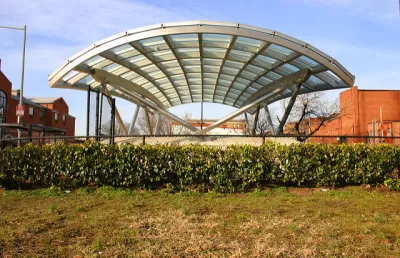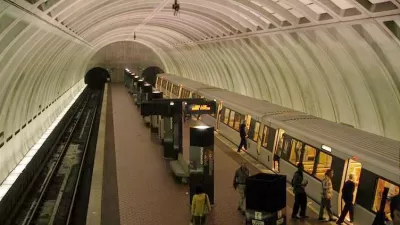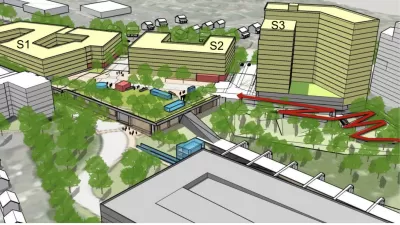How has the Green Line benefitted the economy of Washington, D.C.? A new report counts the ways.

Susan Balding shares news of a new report into the economic effects of the Green Line where it passes through Washington, D.C. The Capitol Riverfront Business Improvement District commissioned the "GreenPrint of Growth 2.0" [pdf] report, five years after an initial report found surprising levels of population and economic growth along the Green Line corridor between the Petworth to Navy Yard stations.
As for the findings on economic growth from the most recent report, Balding writes:
To sum things up: it’s a lot —enough to generate $3.66 billion in tax revenues for the District over the next 20 years. Thanks to the increase in housing and retail near transit, the Green Line corridor has become an increasingly attractive place to live.
Balding breaks down the findings of the report with regard to the housing and retail developments that have arrived on the corridor, along with the resulting job growth in construction and other sectors of the economy. Balding also concludes the article with an appeal for equitable mobility: "As we add more mixed-use development near transit, it’s important to make sure that a diverse group of people are able to access and use it (and yes, this means afford it)."
FULL STORY: Housing and jobs are popping up around the Green Line at breakneck pace

Planetizen Federal Action Tracker
A weekly monitor of how Trump’s orders and actions are impacting planners and planning in America.

Maui's Vacation Rental Debate Turns Ugly
Verbal attacks, misinformation campaigns and fistfights plague a high-stakes debate to convert thousands of vacation rentals into long-term housing.

San Francisco Suspends Traffic Calming Amidst Record Deaths
Citing “a challenging fiscal landscape,” the city will cease the program on the heels of 42 traffic deaths, including 24 pedestrians.

Amtrak Rolls Out New Orleans to Alabama “Mardi Gras” Train
The new service will operate morning and evening departures between Mobile and New Orleans.

The Subversive Car-Free Guide to Trump's Great American Road Trip
Car-free ways to access Chicagoland’s best tourist attractions.

San Antonio and Austin are Fusing Into one Massive Megaregion
The region spanning the two central Texas cities is growing fast, posing challenges for local infrastructure and water supplies.
Urban Design for Planners 1: Software Tools
This six-course series explores essential urban design concepts using open source software and equips planners with the tools they need to participate fully in the urban design process.
Planning for Universal Design
Learn the tools for implementing Universal Design in planning regulations.
Heyer Gruel & Associates PA
JM Goldson LLC
Custer County Colorado
City of Camden Redevelopment Agency
City of Astoria
Transportation Research & Education Center (TREC) at Portland State University
Jefferson Parish Government
Camden Redevelopment Agency
City of Claremont





























